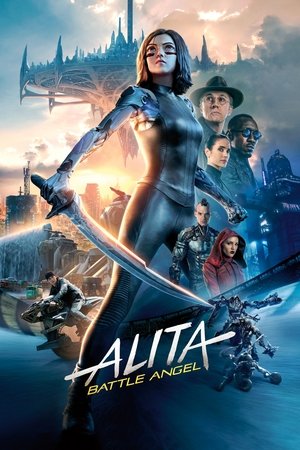
Alita: Battle Angel
James Cameron has spent more than a decade trying to bring Alita: Battle Angel to the big screen. Based on a popular cyberpunk manga series by Yukito Kishiro, published between 1990-1995, he has spent that time refining the script and developing the world that Alita inhabits. And that’s pretty much what he now spends most of his time taking care of with the Avatar movies and the world of Pandora. Hence the reason why he eventually decided to step back into producer duties for this movie, letting Robert Rodriguez pick up the directing reins in order to finally get it finished. Rodriguez uses much of the script that Cameron wrote, but brings a little bit of his trademark style to the table too. It’s 2563, and we’re in Iron City. Dr Dyson Ido (Christoph Waltz) is scavenging among a huge scrapyard, looking for cyborg spare parts that he can make use of, while fresh metal and rubbish rains down from Zalem – a man-made, floating city sitting in the sky above Iron City. 300 years ago there were many of these floating cities but following a brutal war all of them except for Zalem perished. During that time though, the elevator leading up to Zalem was destroyed, and these days only the ‘pure’ inhabitants of Zalem are permitted there. Nobody from Earth is allowed to visit and if anyone comes down from Zalem, they’re not allowed back. It’s to try and avoid any contamination from entering Zalem. If you’ve seen the Matt Damon movie Elysium… well, then it’s a bit like that really. Among the usual items, such as robotic hands and eyeballs, Dr Ido discovers Alita, or rather the core of Alita – lying lifeless and broken, with only a battered hairless head and upper torso remaining. He takes her back to his laboratory/home, where he works as a cybernetics expert, repairing and upgrading the inhabitants of Iron City who are either cyborgs or humans with cyborg body parts. Along with his assisting nurse, and using a robotic body that had been previously built for his now deceased daughter (this gets briefly explained later), they rebuild her, giving her the name Alita (also his daughters name). Alita awakens later in a nice comfortable bed, in what was presumably Dr Ido’s daughters room. She has no memory of her previous existence and sets about experiencing all the sights, sensations and tastes that human life and Iron City has to offer, exploring and striking up a friendship with local boy Hugo and his group of friends. But, as the name of the movie implies, this cyborg was built for battle, and it’s not long before Alita begins to remember who exactly she used to be and just how good at kicking ass she is. A quick word about the visuals, as they are by far the best thing about this movie. Iron City, despite clearly being a futuristic world, is certainly not dark or bleak looking in the way we’re used to with similar movies of this genre. Many of the early scenes take place during daylight hours and the city is a vibrant, bright, bustling home to thousand of humans and cyborgs. We get to go beyond the limits of Iron City – the city walls, out to the badlands beyond, and as you’d expect from Cameron a lot of thought and detail has gone into mapping out and building this world. The cyborgs and the other robots we meet are all pretty standard for a movie of this kind, but it’s Alita that is the most impressive. Much of this is down to the incredible CGI involved in making her look as realistic as she does, but a lot of what makes her so enjoyable and believable is down to Rosa Salazar, whose motion captured performance helps bring her to life. The visuals are obviously at their most impressive during the battle scenes involving Alita – where so many movies with heavy CGI battles end up as just a messy whirlpool of characters and action, that’s certainly not the case here. Slick, inventive and exhilarating choreography allowing you to actually track and follow every single character and action in crisp detail. It’s refreshing and impressive, even more so when watched in 3D and particularly so during the fast paced Motorball scenes featured towards the end of the movie. Outside of the visuals though, other characters and plot lines don’t seem to stick so well, which is disappointing considering the rich source material available to the film makers. Alita: Battle Angel suffers from inconsistent pacing, dialogue that is clunky and exposition-heavy and there are many times when the accompanying soundtrack just felt distracting to me, out of place with whatever is currently happening. Christoph Waltz, Mahershala Ali and Jennifer Connolly all seem overqualified and underutilised, and the romance between Alita and Hugo is unnecessary, and at times annoying. It feels like it’s trying to cram too much story into its two hour run time, resulting in plot holes and frustrations later on. And there is even a cliffhanger ending – frustrating in that it feels as though we haven’t even properly concluded this part of the story and we’re now being left to wait should a sequel ever be given the go ahead. I found much to enjoy with Alita: Battle Angel, and would gladly go see a sequel or two, should they get made. It’s enjoyable at times, and dazzling to look at, but overall it did leave me feeling a little bit frustrated and disappointed.
